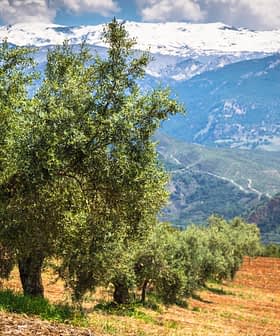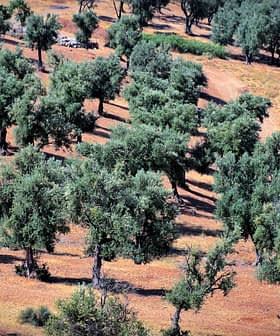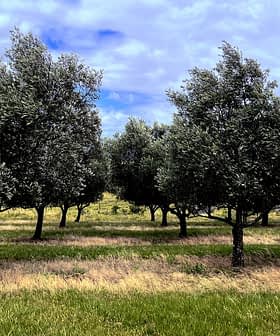Filippo Berio Exec Forecasts Production Rebound, Falling Prices

Dusan Kaljevic is optimistic about the upcoming olive harvest in the Mediterranean, with production expected to reach 3.2 – 3.3 million metric tons globally, leading to lower prices at origin. Despite some regions experiencing below-average production, countries like Spain, Turkey, and Tunisia are anticipating significant production rebounds, with the overall increase attributed to better weather conditions, new trees maturing, and government support for the industry. Kaljevic also emphasizes the need to adapt to climate change in the olive oil sector and increase consumer demand through education and affordability to ensure long-term success.
Dusan Kaljevic feels bullish as promising olive harvests get underway across the Mediterranean basin, and prices at origin are anticipated to drop.
“We are looking at 3.2, maybe 3.3 million metric tons globally,” the Filippo Berio North America chief executive told Olive Oil Times. “That’s an important number.”
The 2024/25 crop year is expected to be the first “normal” harvest since 2021/22, when production reached 3.4 million tons.
If the number of 3.2 million metric tons is confirmed after the first two months of harvesting, I expect that the price will go below €5 in January.
In the two intervening crop years, production dropped to 2.6 and 2.4 million tons, respectively; consecutive years of high spring temperatures and drought yielded the lowest harvests in nearly a decade.
Spain is the hub of global olive oil production, and Kaljevic anticipates production reaching 1.5 million tons, “twice as high as the latest two harvests.”
“Winter was ideal for olive oil incubation,” he said, with plenty of rain and moderate temperatures. “That should be a big relief for the entire industry.”
See Also:2024 Harvest UpdatesAlong with Spain, producers in Turkey and Tunisia are also expecting significant production rebounds.
Kaljevic estimates Tunisia will produce about 300,000 tons, 36 percent above last year and 56,000 tons more than the five-year average.
In Turkey, production is expected to climb to about 350,000 tons, exceeding last year’s yield of 180,000 tons and 39 percent above the five-year average.
Kaljevic attributed the production increases in both countries to a combination of better weather than the previous harvest, new trees entering maturity and many groves entering an ‘on-year’ in the olive trees’ natural alternate bearing cycle.
On and off years
Olive trees have a natural cycle of alternating high and low production years, known as “on-years” and “off-years,” respectively. During an on-year, the olive trees bear a greater quantity of fruit, resulting in increased olive oil production. Conversely, an “off-year” is characterized by a reduced yield of olives due to the stress from the previous “on year.” Olive oil producers often monitor these cycles to anticipate and plan for variations in production.
“There are huge incentives and government investments, and both Tunisia and Turkey have done a fantastic job,” he added. “Their ministries of agriculture support the industry… Every year, there are more investments in intensive and super-intensive farms.”
However, some parts of Tunisia and neighboring Morocco received excessive rainfall. As a result, production is expected to remain below average in Morocco.
Kaljevic estimated that North Africa’s second-largest olive oil producer would yield between 100,000 and 120,000 tons, well below the average of 160,000 tons.
Along with Morocco, Kaljevic confirmed that production is expected to fall in Italy, primarily due to producers entering an ‘off-year’ and some extreme weather.
Meanwhile, production in Greece is expected to double from last year’s lows to between 250,000 and 280,000 tons.
Portuguese producers also anticipate a better yield – between 170,000 and 190,000 tons – due to favorable climatic conditions and many trees entering an ‘on-year.’
According to Kaljevic, olive oil production in Syria is also anticipated to rebound, reaching 140,000 tons.
Filippo Berio purchases lampante olive oil from mills in the northwest of the country, currently occupied by Turkey, refines it in Italy and blends it with virgin and extra virgin olive oil to be sold as ‘pure’ or ‘extra light’ olive oil.
“Certainly, there is an ongoing issue regarding security and the civil war, but the government is protecting the agriculture,” he said. “Despite the economic issues and the civil war, they are investing in olive oil.”
As a result of the production rebound, Kaljevic anticipates olive oil prices at origin to fall by the beginning of 2025 as olive oil stocks are rapidly replenished.
“If the number of 3.2 million metric tons is confirmed after the first two months of harvesting, I expect that the price will go below €5 in January,” he said.
Indeed, some forward buying contracts for the first November and December shipments reportedly range between €5 and 6 per kilogram. Other experts anticipate prices to fall between €3 and €4 per kilogram if the harvest meets expectations.
“I’m not sure it will go below €4 because it will take some time to adjust the worldwide reserves; there is no carryover,” Kaljevic said.
He anticipates that some virgin and extra virgin olive oil still in stock will soon be reclassified to a lower grade and emptied from tanks as they are cleaned and prepared for the next harvest.
Filippo Berio sources most of its extra virgin olive oil from Spain, Italy and Greece. However, poor harvests in all three countries in recent years and steadily rising production in Portugal, Tunisia and Turkey have led the company to diversify its sourcing strategy.
Kaljevic added that the company has also started to purchase extra virgin olive oil from Argentina and Chile to supplement its stock at the halfway point between Northern Hemisphere harvests.
Like many in the olive oil sector, he views climate change as an existential threat to the industry.
While pointing out olive trees’ resilience, Kaljevic worries that extreme weather events and an increasingly hot and dry climate could make the business of making and selling olive oil unsustainable.
“There is a climate change impact,” Kaljevic said. “The pattern is changing. Instead of looking at the olive oil harvest cycle over five to ten years, we are now looking at two to three years.”
In the medium term, he anticipates some olive-growing regions in Europe and California to expand to the north. Reports from Italy show that the number of olive groves and oil producers is increasing in the north while these numbers remain steady or fall in the south.
Kaljevic believes companies must adapt to the changing climate by studying new olive cultivars and the olive genome. He also called for more investment in developing new technology to increase mill yields and optimize agronomic practices.
“We have to invest in the technology, which means micro-filtering water to the exact blocks and rows where the olive trees need it,” Kaljevic said. “At the same time, we must invest in planting new super-intense olive tree cultivars.”
To that end, Filippo Berio is studying 50 different cultivars at its open-air lab in Italy, including some no longer planted commercially.
“Eight out of those 50 are more resilient against the olive fruit fly and Xylella fastidiosa,” Kaljevic said. “They also need less water.”
While Kaljevic spends a lot of time thinking about the supply side of the olive oil business, his goal at Filippo Berio North America is to increase household penetration and per capita consumption in the world’s third most populous country and largest economy.
“When we talk about the United States, we are talking about a continent and not a country,” he said. “A consumer in Florida or someone in North Dakota is perceiving olive oil completely differently.”
According to Kaljevic, the U.S. market is particularly challenging to penetrate on a large scale because of its immense size, distinct climates, significant income inequality and cultural diversity.
“There is a plan to grow the household penetration,” he said. “Today, it’s at a level of 45 percent; 55 out of 100 families in the United States do not use olive oil at all. “
“The 45 percent of families who consume olive oil have a higher income than the average and are more knowledgeable about the product,” Kaljevic added. “This U.S. consumer is ready to pay slightly more than the consumers in the rest of the world.”
He believes increasing supply, keeping prices fair for customers and consumers, and growing demand through education are vital to the sector’s long-term success.
“We need to make this product more available, more affordable and more understandable for consumers around the world,” he said. “There is no way to grow the production capacity without increasing the demand.”










